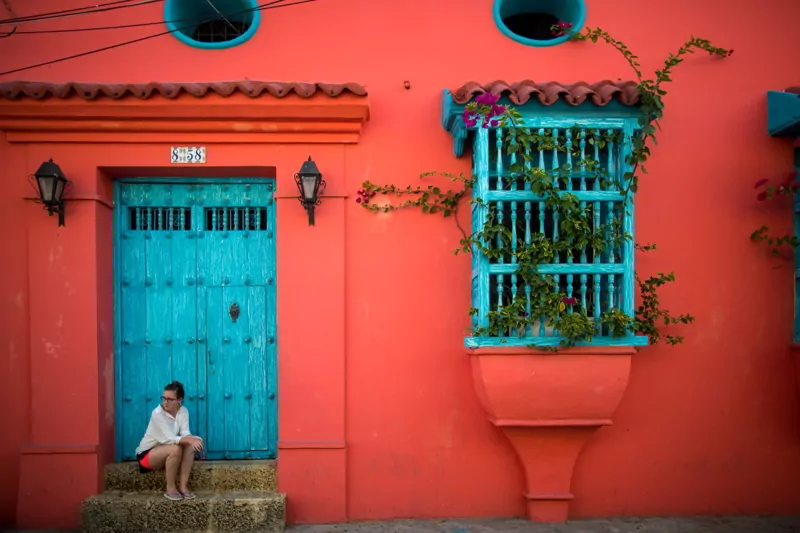On Aug. 7, 1974, Frenchman Philippe Petit made headlines when, in the space of 45 minutes, he crossed four times between the Twin Towers of the World Trade Center.
And, he didn’t just walk—the 24-year-old high-wire artist danced and lay down on the wire, too, balance pole in hand.
Whether you look on it as art or pure lunacy, the story, as it unfolds in the 2008 documentary Man on Wire, is an intriguing one that leaves us with more questions than answers.
Breaking and entering the World Trade Center—as Petit and his team had to do at night to set up for the early-morning stunt—was, of course, a criminal act.
Petit’s life-long friend Jean-Louis Blondeau—who had mastered the crossbow in order to shoot the performance wire from the north to the south Tower under cover of darkness—was treated like a common criminal and given his marching orders back to France.
But not so for the tightrope pro…
Following a brief visit to the NYPD, a psychiatric test to prove his sanity, and his commitment to a free performance for children in Central Park, Petit walked out of the cop shop a hero… and has lived in the United States ever since. (The Port Authority of New York and New Jersey even awarded him a lifetime pass to the Observation Deck of the Twin Towers.)
Can you imagine how a stunt like this would be handled by the authorities today? In fact, I can’t imagine any jurisdiction in the world that would dish you out a visa as a reward for some death-defying performance.
But I share this crazy story today to make an important point…
Having at least one backup residency and/or citizenship is something we at LIOS strongly recommend—something that may work to protect you in the future… or, at least, give you options.
Yes, you’re going to have to jump through some hoops to establish a foreign residency. And, depending on where you go, there may seem to be an endless supply of forms to be filled… sometimes hours standing in line…
But wobbling on a tightrope, 1,365 feet high, battling the early morning mist and breeze? Nobody’s going to ask you to do that.
And, best of all for you, dear Overseas Property Alert reader, it’s possible to kill two birds with one stone…
That is, in certain parts of the world, an approved property purchase can qualify you for your second residency.
Here are some of the top places you can do that today…
1. Portugal
Portugal’s Golden Visa program is one of the best residency programs in Europe. It offers many options for obtaining an investor’s visa in Portugal, including through an investment in real estate—the starting minimum is 280,000 euros (or US$330,460). As a legal resident, you have access to local public schools and health care.
Under Portugal’s Golden Visa program, you become eligible for Portuguese citizenship after five years of residency, and you can include family members as part of your citizenship application. When you qualify for citizenship in Portugal, you also gain the right to work and live in all 26 European countries in the Schengen Area.
2. Greece
For a 250,000-euro investment in real estate (that’s around US$292,000 at today’s exchange), non-EU citizens and their families can get residency of Greece. The visa covers children up to 21 years of age and is granted for five years. After that, it’s renewable every five years as long as you hold the property.
There’s no minimum time you need to spend in Greece to maintain your residency status—you need only show up for visa renewal (again, once every five years). And, your 250,000-euro investment can be split over multiple properties.
3. Ecuador
Hands down, the lowest cost of entry among our top picks. To acquire residency of Ecuador through a property purchase, you need to invest 80 times the minimum monthly salary. This changes annually, but figure around US$32,000 at the current exchange.
The downside to Ecuador is that you can’t be out of the country for more than 90 days either of the first two years after you’ve obtained residency… meaning this isn’t an ideal option for a backup plan but is appealing if you’d like to live in Ecuador.
4. Dominican Republic
Residency in the Dominican Republic is easy, and the country embraces and even incentivizes foreign residents and investors. In order to qualify for residency with a property purchase, the minimum investment is US$200,000.
Residents can apply for loans and import household goods and a car tax-free. Plus, there’s a reasonably affordable and fast option for citizenship. A DR passport isn’t the best travel document in the world, but if you’re interested in spending time in this still-affordable part of the Caribbean, don’t rule it out.
5. Colombia
Like Ecuador, Colombia offers a low-cost entry for residency by investment. You can qualify by buying property that’s at least 350 times the monthly minimum wage—roughly US$80,500 at the current exchange.
As we’ve been saying for some time, Colombia is one of the places where North Americans have a distinct currency advantage right now… even in an upscale neighborhood of Medellín, for example.
One important thing to consider before establishing residency in another country is your tax burden. The Colombian government, for example, taxes residents on their worldwide income after five years of residency and also imposes a wealth tax (that you may or may not qualify for, as the tax kicks in at around US$1.7 million at current exchange rates). Establishing a backup residency in Colombia may not make sense, therefore, unless you plan to spend a lot of time in Colombia anyway.
Before starting down the path to residency in any country, be sure to speak with a local attorney with experience in immigration and tax matters.
Lynn Mulvihill
Editor, Overseas Property Alert

